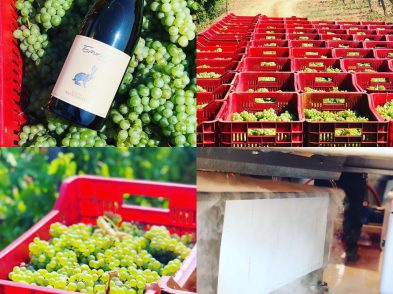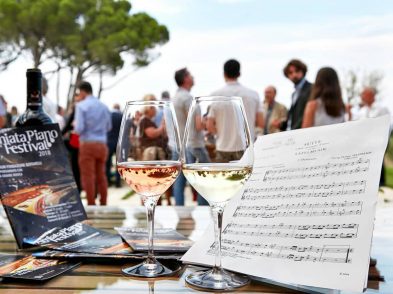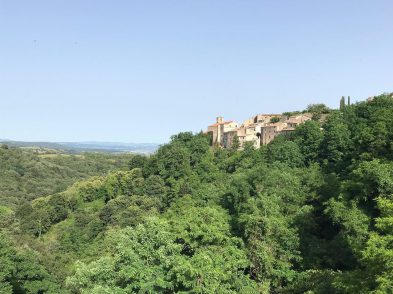In the forests of Monte Amiata, baskets of mushrooms are gathered with Cold War-like secrecy and suspicion now that the first autumn rains have finally arrived: the race is on. Cupboards are raided in search of knee-high boots, baskets are piled high and everyone suddenly becomes a lot more secretive. It is mushroom season, and, as far as Tuscans are concerned, there are never enough to go around.
In southern Tuscany, on the border of the Siena area and the Tuscan Maremma, Monte Amiata is one of the first places to welcome the coveted brown caps. Its thickly clustered chestnut and oak forests are prime mushroom growing territory. In this unspoiled area, hunting is banned and only the odd intrepid tourist disturbs the wild boar and deer. In short, it is the perfect spot for spores to grow.

There is an old saying in southern Tuscany: ‘The tastiest mushrooms are the ones you picked yourself.’ Finding these mushrooms is not easy, however. It takes good knowledge of the area and years of experience. If last year you found a particularly bountiful cluster of ordinali in a stretch of mixed woodlands, there is a chance it will be there again this year—if only you can find your way back.
Mushroom season here is never long. The porcino, fungo castagno and ceppatello will disappear as soon as the winter chill sets in. For true gatherers, that is part of the thrill of the hunt, and in this hunt the players belong to the older generations. They are the grandparents and parents who consider buying mushrooms from the supermarket a vergogna (a true shame). Mushroom gathering is part of autumn life in Monte Amiata. But it is a tradition that, like most of the oldest Tuscan traditions that do not include wine, might one day come to an end.
After more than half a century, Gino Rosetti knows all the best spots in Monte Amiata. The Santa Fiora nonno will never tell a soul, not even his grandchildren, who, he says, are no longer allowed to accompany him on gathering trips because they ‘make too much noise and are always yelling.’
Rosetti moves with incredible stealth. Like the best in the game, he barely rustles the forest undergrowth. Wild mushrooms do not grow on trees. In a whole season, most people might find a handful of prugnoli, a basket of paiciole and maybe two or three sought-after porcini. Silence and secrecy are the keys to not giving away your position and possible fungal bounty.
Every year, Rosetti spends his autumn weekends in the forests. Most of his catch goes to his family, but some he sells or gives away. A kilo of Tuscan porcini costs around 20 euro, but if you are buying them any earlier than October, Rosetti insists you are being duped: the mushrooms most likely come from overseas.
Some of the most seasoned hunters, the ones who know where to find the rare ovolo (cucco in dialect), sell their mushrooms to the highest bidder at weekly auctions. These auctions are by invitation only, attended by aficionados and restaurant owners. Recently, English chef Heston Blumenthal travelled all the way to Santa Fiora to buy some of the psychedelic ovolo mushrooms for an episode of Heston’s Feasts.
I joined Rosetti on a mushroom hunt. I think he was humouring me. We did not find any mushrooms. He refused to take me anywhere near any of his spots, and I admit it was a wet, cold and—for the most part—disappointing experience, but there was something quintessentially Tuscan about it. I felt as if I had tumbled into a bygone era where, soon enough, the mushrooms no longer mattered. The beauty and peace of the forest were pleasure enough.
Foraging in the forest (or supermarket shelves) is not the only way to enjoy mushrooms in Tuscany. On the Sienese side of Monte Amiata, Val d’Orcia annually celebrates its Sagra del Fungo e della Castagna, this year on October 13, 19 and 20 in the town of Castiglione d’Orcia. Aside from the walking tours and gathering trips, this festival is one of the best places to try Monte Amiata’s mushrooms. The local preference is to fry or roast them over an open fire with their natural companions, the caldarroste (roasted chestnuts), but there will be polenta and soup, too.
Good food loves good entertainment and the festival’s Palio del Boscaiolo does not disappoint. In a show of strength and tradition, the palio pits teams of lumberjacks against each other in a race to chop wood with antique saws and eat polenta. For more about the Sagra del Fungo, visit www.prolocovivo.org (in Italian).
This year, the festival is part of Treno Natura, a unique day trip that transports guests from Siena to Monte Amiata’s most beautiful forests and the Sagra del Fungo aboard a period steam locomotive. Tickets are 29 euro and can be bought at www.trenonatura.terresiena.it (in Italian only).
If you feel the call of the wild mushroom, you are welcome to hunt in Tuscany and elsewhere, but you must abide by some important rules. You will need a foraging license, and you should get your mushrooms checked to make sure they are edible. Learn more on the Tuscan Region’s website (www.regione.toscana.it/-/raccolta-dei-funghi) and TF 172 (http://tinyurl.com/pcaq7lj).








